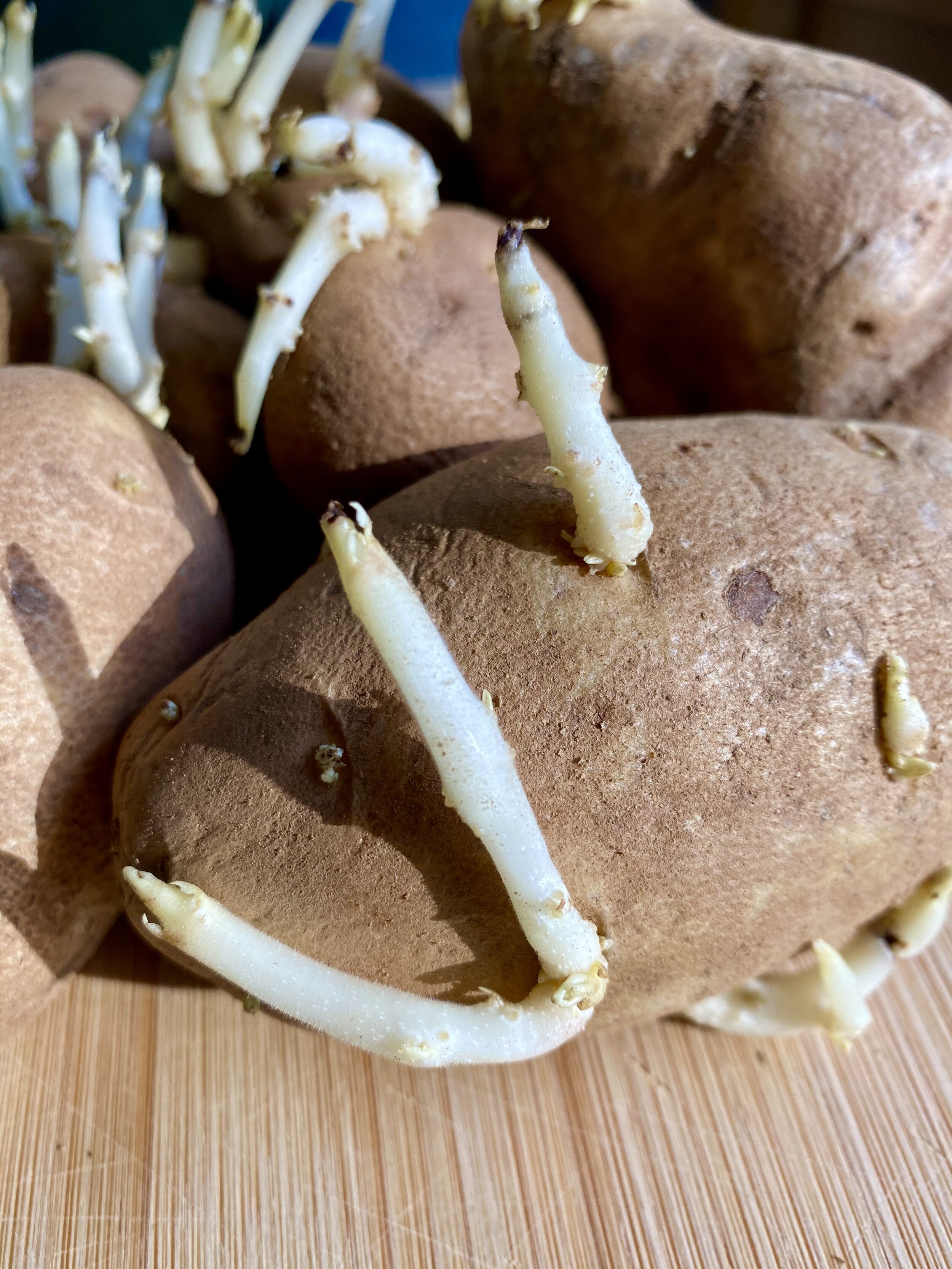#UseItUp with Sprouted Potatoes
Here at Grounded Grub we are always trying to #UseItUp and make sure nothing goes to waste. We try to maximize storage, be thoughtful about our grocery purchases, and get creative with using up ingredients that we already have to save money and help the planet. But sometimes, we all mess up. We buy something in bulk and then forget about it, or we don’t store it the right way and it may have gone bad. But how far does something have to go to fully “go bad” and not be edible anymore?
It’s hard to throw any food away, but often these improper storage situations bring about questions of food safety — which is not something you want to mess around with! More often than not, things are probably a lot safer than we think, but it’s always best to feel confident that what you eat is going to nourish your body and not get anyone sick!
Today (inspired by my most recent storage mishap) we’re taking a look at sprouted potatoes, if you can eat them, why they sprout, and how to better store them in the future!
Are sprouted potatoes safe to eat?
Yes, is the short answer here! Potatoes that have sprouted are still safe to eat, but only once you have removed the sprouts and the area where they sprouted from.
When would potatoes NOT be safe to eat?
Green potatoes should go straight to your compost. Exposure to light puts potatoes into chlorophyll-making (a green pigment) mode. Chlorophyll isn’t toxic (it’s in every green thing that we eat!) but it is an indicator that the conditions got sunny enough for glycoalkaloid toxins to grow, which are too dangerous to risk.
If the potatoes are soft or wrinkly, it’s also time to say goodbye. As the potato sprouts, it can begin to shrivel as more and more starch is converted to sugar as energy for the growing shoots. A wrinkled, shriveled potato will have lost nutrients (and won’t taste very good either!).
If they are rotten or smelly, definitely time to toss! No matter what your food should always smell good :)
Why do potatoes sprout?
Potatoes don’t let a lack of dirt stop them from growing if the conditions are right! All they need is darkness and moisture (like a kitchen drawer!) to start popping off. But if they are still firm when you squeeze them, the growing potatoes can be eaten, once you’ve removed the sprouts and cooked them.
How to get rid of sprouts?
Plucking off the sprouts is easy because your vegetable peeler was actually built to remove sprouts! Use the intentional scoop-shaped tip on your peeler to dig out sprouts or carefully use a small knife to carve out the “eyes” and the soft shape around them.
How should you store them?
First things first: Don’t store potatoes in the fridge. Those extra-cool conditions will trigger their starches to convert to sugars, that will turn brown when cooked and cause the potatoes to be less nutritionally dense AND change their texture.
But, if stored correctly, potatoes will keep up to 2 months after purchase. Transfer them something breathable (like a paper or mesh bag or a cardboard box) and store in a cool, dry place. Your kitchen and pantry are probably too warm to store and will likely lead to sprouting. If you don't have the right storage conditions, that’s okay! You will just have to plan on eating them more quickly than someone who has a basement or a cool pantry.
And can I make any dish with them after?
Because you need to cut away the “eyes” after a potato has sprouted, they might not be the best choice for a baked potato or other dish that would require a full potato with the skin on. Most people choose to peel the potatoes after sprouting and make something like au gratin potatoes or mashed potatoes. Luckily the world of potatoes is wide and vast and there are so many great options! We’d recommend our vegan potato leek soup, or the curry roasted home fries to #UseItUp with your storage mishap.
Sources:



